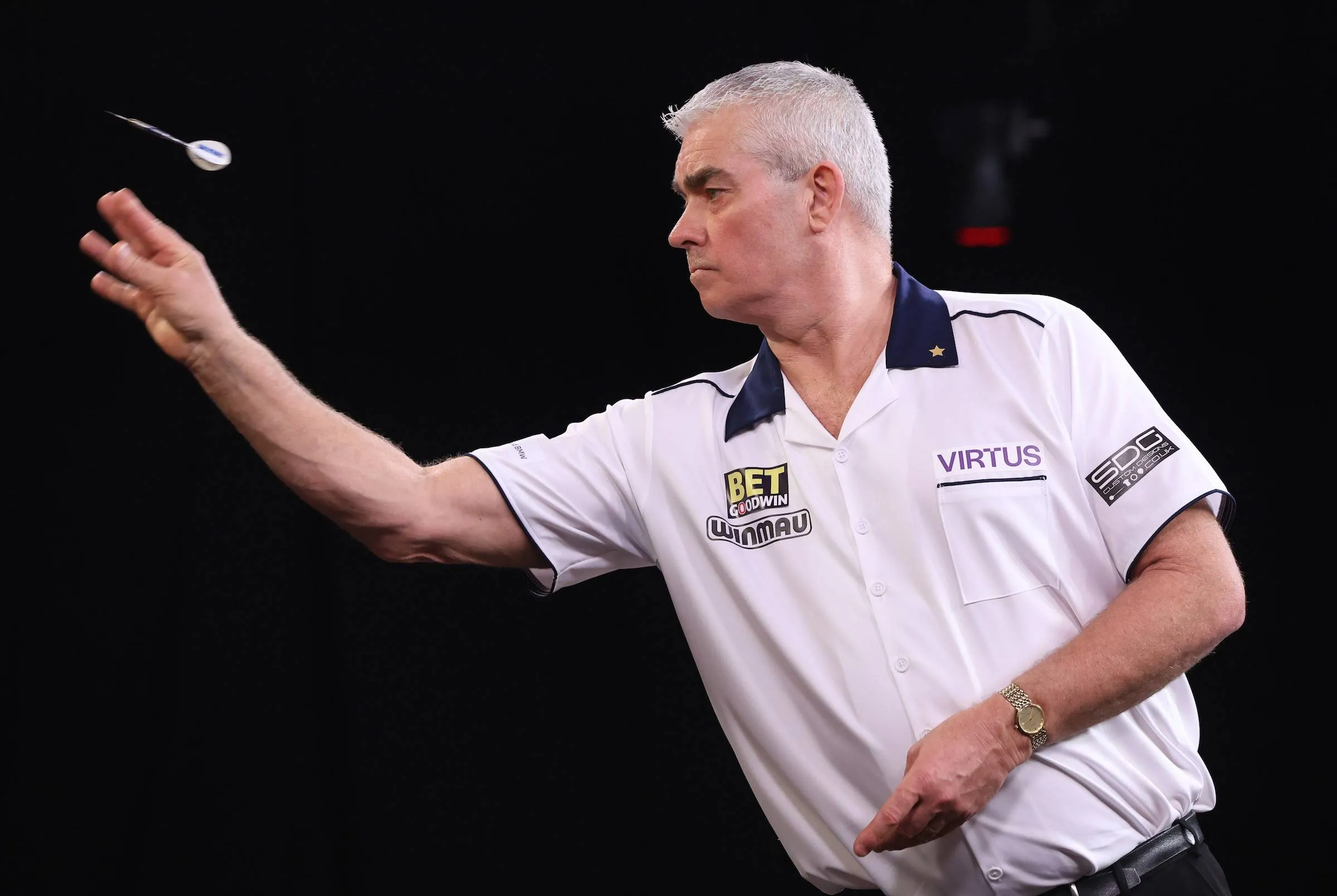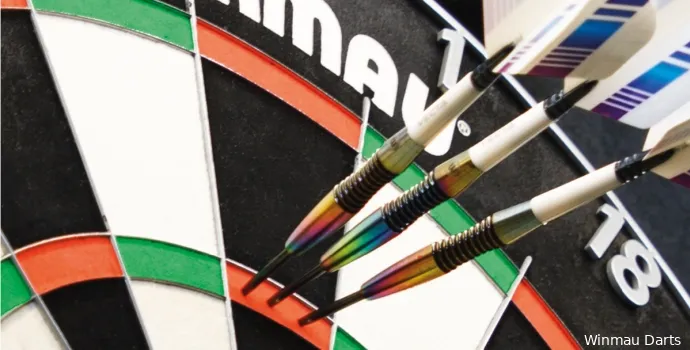
Whether you are a novice darter or have been aiming at the board for years, understanding the construction of a dart is indispensable for improving your game. A dart may seem simple, but it consists of four essential parts: the flight, the shaft, the barrel, and the tip.
Each component affects how a dart behaves in the air, how it sits in the hand, and how accurately you can throw. In this article, we'll take you through each element of the dart and explain how you can optimize your own setup through smart choices.
Flight
The flight is the rear part of the dart and plays a crucial role in flight stability. Once a dart is thrown, the flight ensures that the arrow flies straight and controlled to the board. Flights are available in different shapes, sizes, thicknesses and materials, with each detail affecting the aerodynamic behavior of the dart.
Read also
The most common shape is the standard flight, also called No. 2, and it offers excellent stability, especially with heavier darts. Smaller or slimmer flights, on the other hand, are more often combined with lighter darts or for faster, more direct flight.
In addition to the shape, the material also plays a role. Classic paper or plastic flights are cheap and easy to replace, but can wear out or bend quickly. For players who value durability, there are molded, or "moulded," flights. These stay in shape better, maintain their angled position and thus contribute to a constant throw, which can be a big advantage especially at the competitive level.
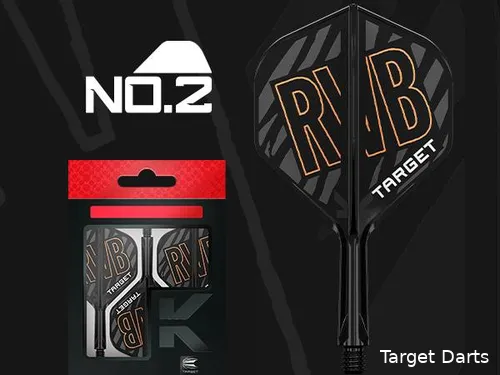
More and more manufacturers are coming out with designs where the flight and shaft are permanently attached to each other
Shaft
The flight is attached to the shaft, the connecting piece between the flight and the barrel. Shafts are available in different lengths and materials, such as nylon, plastic or aluminum. Nylon shafts are light, cheap and flexible, while aluminum is sturdier and lasts longer, but can sometimes vibrate loose earlier during play.
The length of the shaft affects the center of gravity of your dart: a shorter shaft moves the weight forward, promoting a faster throw, while a longer shaft moves the center of gravity backward, making the dart more stable in the air. Players with a fast arm movement often opt for a shorter shaft, while a calm throw will benefit from a longer version.
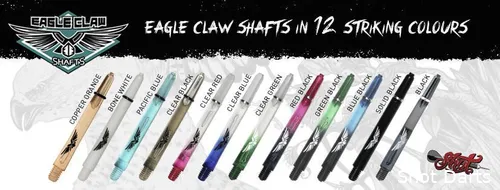
Shafts these days come in all shapes, colors and sizes
Barrel
The centerpiece of the dart is the barrel, the part you hold while throwing. The barrel largely determines the feel and control you experience. Barrels differ in weight, shape, thickness and texture.
Some players prefer a heavy dart around 26 grams, which sits firmly in the hand and must be thrown with force, while others prefer a lighter dart around 18 grams that flies faster and requires less force. What suits you best depends on your throwing style, grip and preference for speed or precision.
Read also
Most quality barrels are made of tungsten (tungsten), a heavy and wear-resistant metal that allows for slim darts with lots of weight. Tungsten therefore offers more room on the board for group throws, such as when aiming for triple 20.
Cheaper darts are often made of brass (brass) or nickel-silver, which do tend to be thicker at the same weight and thus collide more quickly in the board. The grip on the barrel can range from smooth to highly serrated, with patterns such as rings or knurling that provide extra grip while throwing. Some players even use wax to improve grip, especially with warm or moist hands.
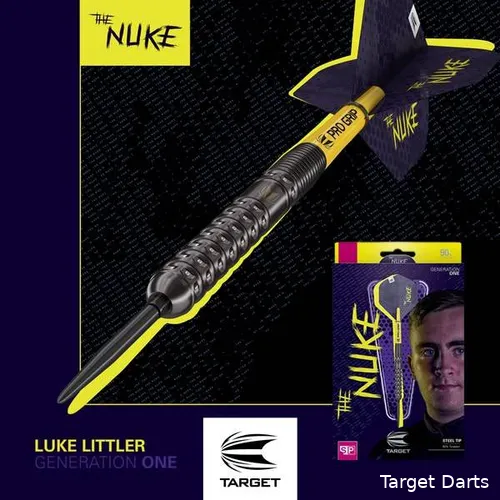
Over the past year and a half, a lot of Luke Littler's sets of darts have been sold
Point
At the front of the dart is the tip, or tip, the part that makes contact with the dartboard. A distinction is made between steel tip and soft tip darts. Steel tips are used on classic sisal or "bristle" dartboards, which you find mostly in pubs and tournaments. It is important that these tips stay sharp to prevent so-called bounce-outs - where the dart bounces back off the board. A blunt tip also damages the board faster. Players can use a special sharpener to keep their points sharp, or use a repointing tool to replace the point completely with a different type or color.
For those who play at home or on an electronic dartboard, soft tip darts are the standard. These plastic tips are safer and make the game more accessible to families with children or recreational players. Electronic boards automatically calculate the score and some even offer the ability to play online against other darters from anywhere in the world.
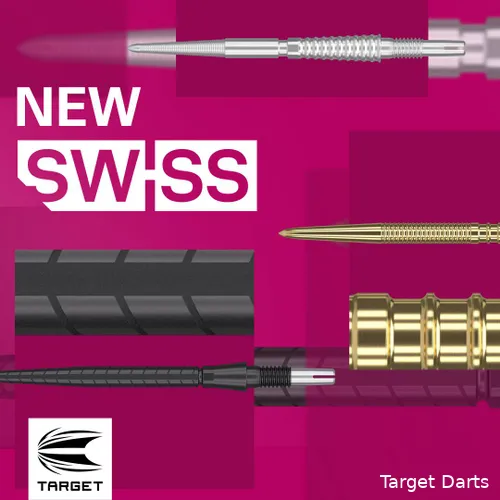
Another trend in recent years is that many players are playing with grip points
Accessories
In addition to the basic parts, there are several accessories that can refine your darts setup. For example, flight protectors are small metal caps that you can attach to the end of your flights to reduce wear and tear. They prevent other darts from damaging your flights during group throws. There are also slot lock rings, which are attached to the flight using a hole bar and provide extra grip between flight and shaft. Also handy are add-a-grams, small weights that allow you to increase the weight of your dart without buying a whole new set.
All of these choices, from flight to tip, from material to grip, contribute to a player's feel, control and performance. What works perfectly for one person may be totally inappropriate for another. Therefore, it pays to try different combinations and keep experimenting until you find the ideal composition. Darts is a precision sport where confidence in your equipment is just as important as technique and concentration.
claps 0visitors 0
Just in
Popular news
Latest comments
- Have you noticed in honour of the great man ,Richie Burnett that Waitrose have designed their current carrier bags with a bright green W...very reminiscent of the shirt Richie wore in the 90s Never in the history of darts do we need a player to withdraw and provide that safety net for the greatest player in darts. Seeing as Richie Burnett is a World Champion he should have a permanent tour card.richieburnettrocks09-01-2026
- Come on big lad,you say something, delete it,so what's the beef? You lost 5-0. Did he just lose his tissue whilst crying? If you can't do it, don't. You wouldn't catch your dad wiping your nose! All the greats of the past,and a snotty kid boy who lost. Boo boo. Come on Mr Burnett,you know you agree with me!!! You are a true gentrick6707-01-2026
- What's he moaning about? His dad not letting him borrow his drill bits to throw with? Come on boy,the dartboard doesn't move,if you're like this now,best you get driving for Uber,and shut up lad. Gamesmanship is part of it,grow your hair or grow a pairrick6707-01-2026
- Bunting over Noppy? No thanks, I'm out. My PDC sub lapses at the end of the month, maybe I'll renew it for the next WDC.thebogeyman06-01-2026
- I definitely won't be watching this tripe. Picking fatty Bunting so he can mime and do those pathetic hand gestures in a desperate attempt to appease the crowd is completely criminal. This worthless goof and peoples chump is taking home £80000 from the competition Why not pick Justin Hood? A refreshing and very popular characterrichieburnettrocks05-01-2026
- With those averages,I can really not see anyone quaking in their shoes!rick6705-01-2026
- Well,I won't be be watching the weekly tirade of this 'league!' It's honestly a waste of time,I'm fed up with writing it,but it's a weekly p**s up for fans,and a payday for 8 players and the pdc. Helps not 1 single other playerrick6705-01-2026
- Yes you pay taxes in a "civilised" society.BandB05-01-2026
- Good luck to Richie Burnett A World Champion and the greatest player in darts COME ON RICHIE!!!!richieburnettrocks05-01-2026
- Have 2 groups of 8 players, alternate weeks. 1st & 4th ranked in 1st pot, 2nd & 3rd in the 2nd. Halves the number of potential match-ups. Top 4 from each group then mix up to fight out for the 4 final night spots.Arazi9204-01-2026
Loading



